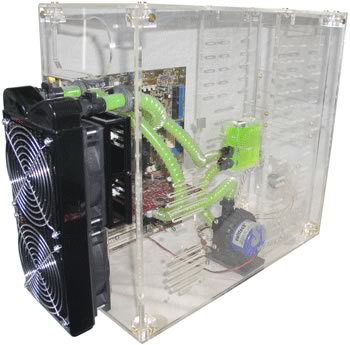NoOther
Supreme [H]ardness
- Joined
- May 14, 2008
- Messages
- 6,468
Extreme overclocking has nothing to do with anything tested in this review. Furthremore, the real benefits of watercooling are when you're using a bigger pump and a better (and more restrictive) block to give you lower temperatures. If you're trying to use thermal capacitance to push 30 second benchmarks, you're doing it wrong.
1) I was referring to the person that said he didn't see the advantage of the simple water cooling device over a good air cooling device, I wasn't referring to the article.
2) I was spot on with what I said. I have a vast amount of experience with overclocking and cooling solutions. The benefits of water cooling solutions are solid, stable temperature control and the avoidance of sudden bursts of heat produced. This has nothing to do with the changes inbetween overclocks and everything to do with the exponential amount of heat produced when the system is running heavy calculations at the overclocked speed. So that when you are in a game and a large amount of calculations comes through, possibly to crunch physics, the processor will work a lot harder, require more power and thus more heat. The temperature can spike and if not dissipated enough can cause instability. Liquid Cooling has a better capacity to handle these changes.
![[H]ard|Forum](/styles/hardforum/xenforo/logo_dark.png)
